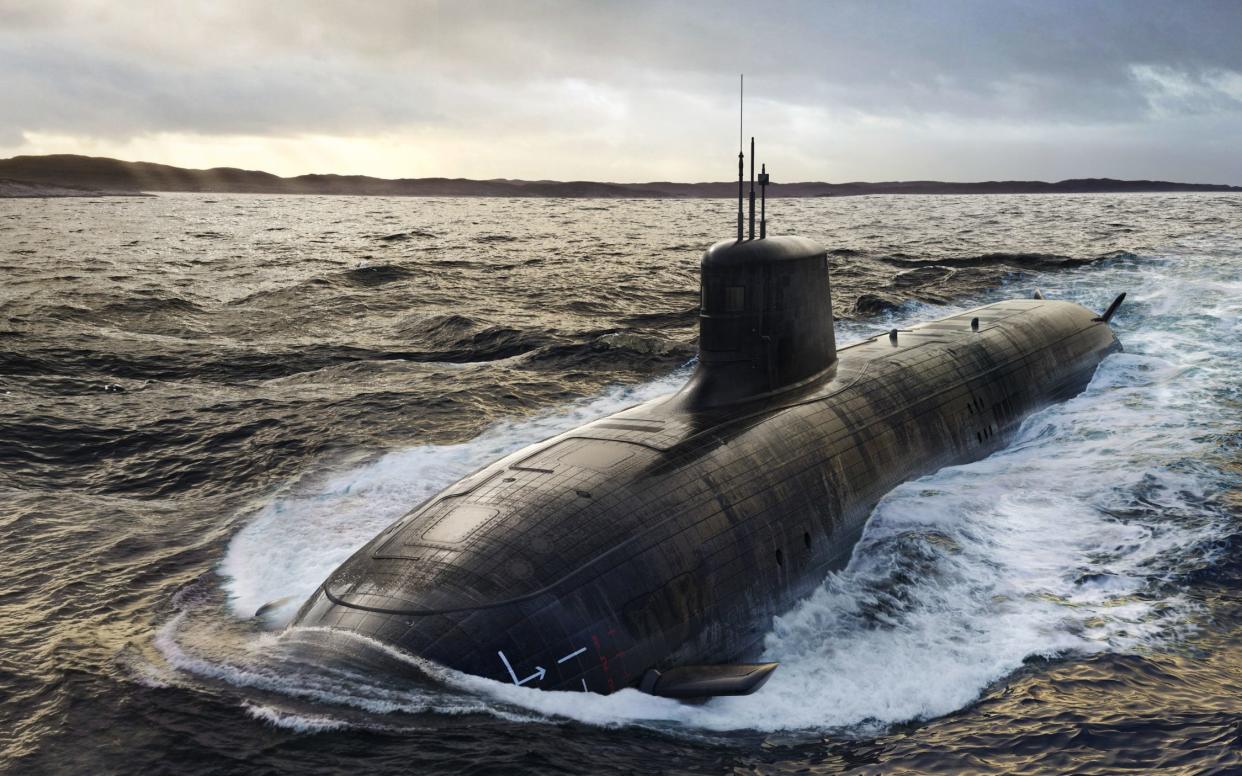Here’s a British industry worth splurging defence billions on

Britain will soon be spending a lot more money on defence. It’s a good decision, or a good aspiration anyway. The nation’s defences can always be said to pay us back the money spent on them. If things go well they deter our enemies and save us the terrible costs of fighting a war. If not, they can save us the even worse costs of losing one.
Yet boosting our defence capabilities can also pay us back as an investment. We can, in theory and sometimes in practice, establish high value-added industries which will develop and manufacture advanced military technologies. In addition to being used to equip our own forces, these can be exported to our economic gain.
Even better still, advanced military technology may have civilian applications – meaning even bigger markets. Britain still has the eighth largest manufacturing sector in the world: one reason for this is that we are home to the second largest maker of jet engines, Rolls Royce. Jet engines, of course, were originally an advanced military technology.
Whenever we develop a new piece of defence equipment nowadays, it is blithely assumed that export sales, if not major national champion businesses, will inevitably follow. All too often, however, export sales are poor and no other business is generated.
A classic example is the Eurofighter Typhoon combat jet, which has been a tough sell. The first Eurofighters, recently described by the Ministry of Defence as “early fourth generation” aircraft, went into RAF service in 2007. But the first fifth-generation fighter, the F-22 Raptor, had gone into service two years beforehand. The accompanying F-35 was already in flight testing.
In cases like this, where the equipment we develop has to compete against more advanced products (ones usually made in the US), we should probably just buy off the shelf. Yet we have been stubbornly reticent to do so, perhaps because that would mean pulling out of the Global Combat Air Programme. But this multinational initiative looks set to become another Typhoon-style disaster itself – and one we should want to avoid.
But there are cases where it would make a lot of sense to build our own. The picture is very different, for instance, with nuclear powered submarines.
Only six countries in the world can build nuclear subs, and the US does not even have the building capacity to replace its existing fleet, let alone enough to produce exports. Nor is there any great need to consider France, as French nuclear submarines run on low-enriched uranium fuel.
High-enriched fuel, as used by the US and UK, means that a submarine never needs to be refuelled during its service life. As reactor refuelling is an extremely complex, prolonged and expensive business, the French technology is unattractive. Peace campaigners might disagree, arguing that high-enriched fuel could be plundered and used for warheads, but their arguments make little sense given it would also be much, much harder to steal.
So Britain probably has the Western-aligned nuclear powered submarine market to itself. That might seem a niche market, but in fact there are already two known customers. There’s Australia, now acquiring subs via the Aukus project, and there’s Canada. Canada abandoned plans to get nuclear submarines back in the 1980s, but its government is now thinking again.
The nuclear submarine market is probably larger than that, in fact.
People don’t always realise it, but there is an absolutely enormous difference between conventionally powered and nuclear-powered submarines. A nation equipped with nuclear-powered submarines is a hugely more dangerous opponent than one without. There is a convincing case to be made that many Western allies should be encouraged and permitted to have them. And, for the moment, that opportunity is Britain’s to grasp.
However, for the moment Britain’s nuclear submarine industry and infrastructure are a mess. This is, in significant part, thanks to the Coalition government’s appeasement of Lib Dem peaceniks in 2010, when the replacement of the national nuclear deterrent submarines was delayed by five years.
This was compounded by the constant problem of safety creep, decades of under-investment, blundering and mismanagement. We are only managing to build a submarine every five years, a rate sufficient to sustain a fleet of six at most.
If ever there was a case for Britain ploughing in money and doing something ourselves, this is it. There is no option to buy from someone else, for a start. If Britain can build the docks and shipyards and factories to build and maintain world-class nuclear submarines at a decent rate, we have strong natural allies who would want those boats – and our help in building high-end technology and infrastructure for themselves.
Small, transportable nuclear power reactors supplied as sealed units that never need refuelling would also have the potential to become a big commercial business. In this, Rolls-Royce is already a contender, and it could be a much stronger one were the military side of the business properly resourced.
Let’s not fritter away our new defence money on unviable industries in which we can never be competitive. When we want jet fighters or various similar things, we should just buy ready-made. But when we want nuclear submarines, we should build and buy British.

 Yahoo News
Yahoo News 
